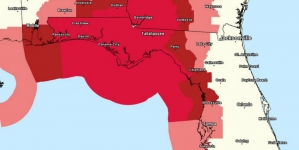-
Tips for becoming a good boxer - November 6, 2020
-
7 expert tips for making your hens night a memorable one - November 6, 2020
-
5 reasons to host your Christmas party on a cruise boat - November 6, 2020
-
What to do when you’re charged with a crime - November 6, 2020
-
Should you get one or multiple dogs? Here’s all you need to know - November 3, 2020
-
A Guide: How to Build Your Very Own Magic Mirror - February 14, 2019
-
Our Top Inspirational Baseball Stars - November 24, 2018
-
Five Tech Tools That Will Help You Turn Your Blog into a Business - November 24, 2018
-
How to Indulge on Vacation without Expanding Your Waist - November 9, 2018
-
5 Strategies for Businesses to Appeal to Today’s Increasingly Mobile-Crazed Customers - November 9, 2018
Google’s Free Balloon Internet Project to Move Ahead for Testing
Google has started testing its Project Loon air-balloon beamed internet service in Sri Lanka, after striking a deal for spectrum with the government.
Advertisement
Teller said his team refers to their base as “The Moonshot Factory” because their goal is to blend audacious ideas with the realities of getting them to market.
Project Loon, as the research is dubbed, has been in development at Google’s X division since 2012 (X is now spun off as part of Alphabet, Google’s larger umbrella company). Project Loon launched by American tech giant Google is a network of balloons travelling on the edge of space created to connect people in rural and remote areas.
The first of three balloons slated for the trial drifted into Sri Lankan airspace on Monday, after being launched from South America, Sri Lanka’s Information and Communication Technology Agency chief Muhunthan Canagey told AFP.
Winds in the stratosphere are stratified, and each layer of wind varies in speed and direction, so Project Loon uses algorithms to determine where its balloons need to go. It had to make sure it get the Wi-Fi signal all the way to devices on the ground, at a high enough bandwidth to deliver access to large populations at fast speeds-Loon is now up to 15 megabits per second, says Teller, enough to stream video.
Service providers will be able to access higher speeds and improve the quality of their existing service once the balloon project is up and running.
Once the testing is complete, Google plans to enter into a joint venture with the Sri Lankan government.
However, not to forget Sri Lanka was the first country to offer mobile phones in South Asia in 1989. According to official figures, there are 3.3 million mobile internet connections and 630,000 fixed line internet subscribers among the country’s 20 million people.
Advertisement
Free Basics, which Facebook maintained was intended as a humanitarian effort, earned comparisons to the British East India Company and raised questions about whether the service violates net neutrality, the principle that prohibits a service provider from funneling users to a particular group of websites or blocking access to others. It is also the first to commission a 3G internet network in 2004 and also the first to roll out a 4G network in 2014.




























